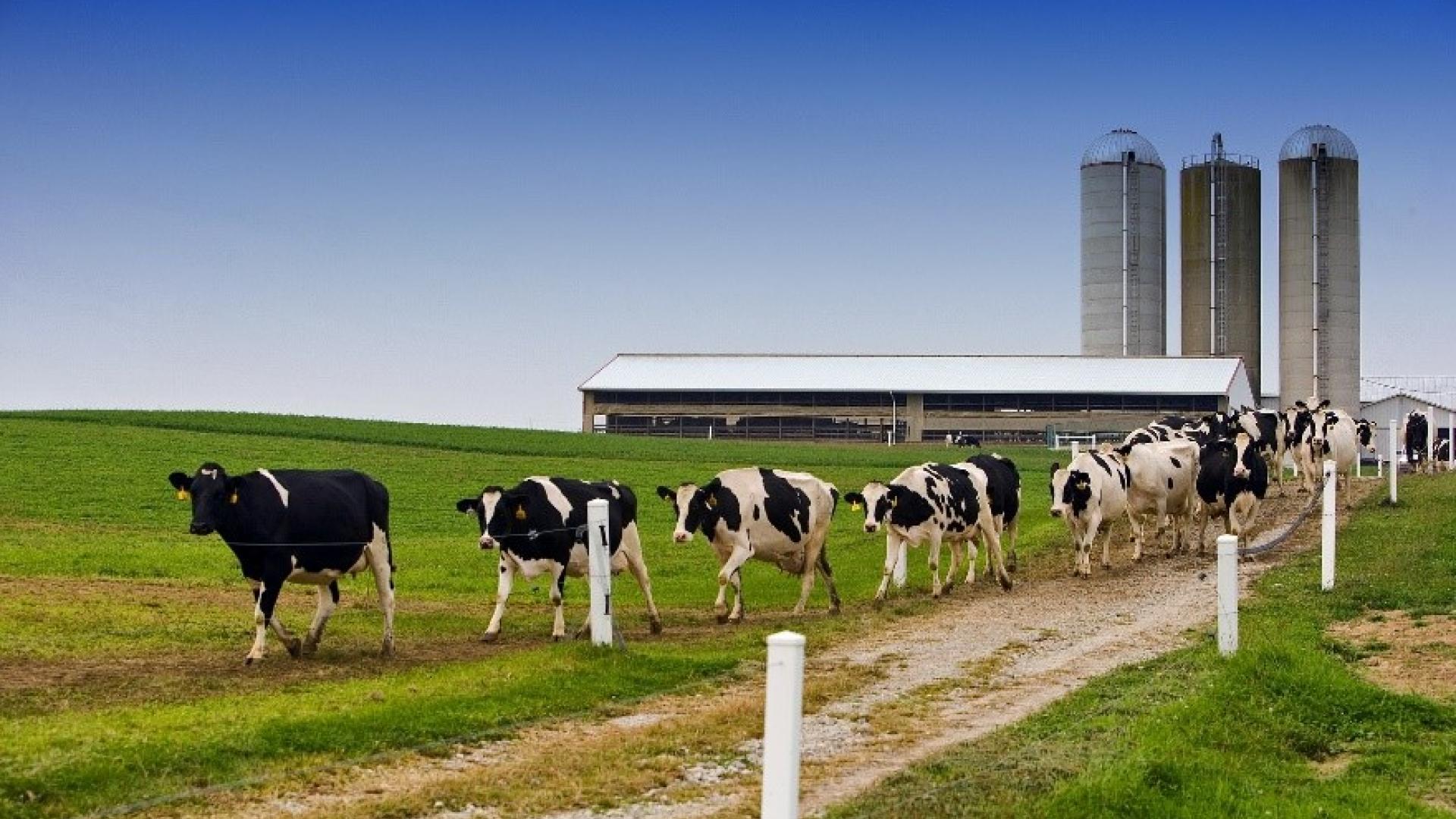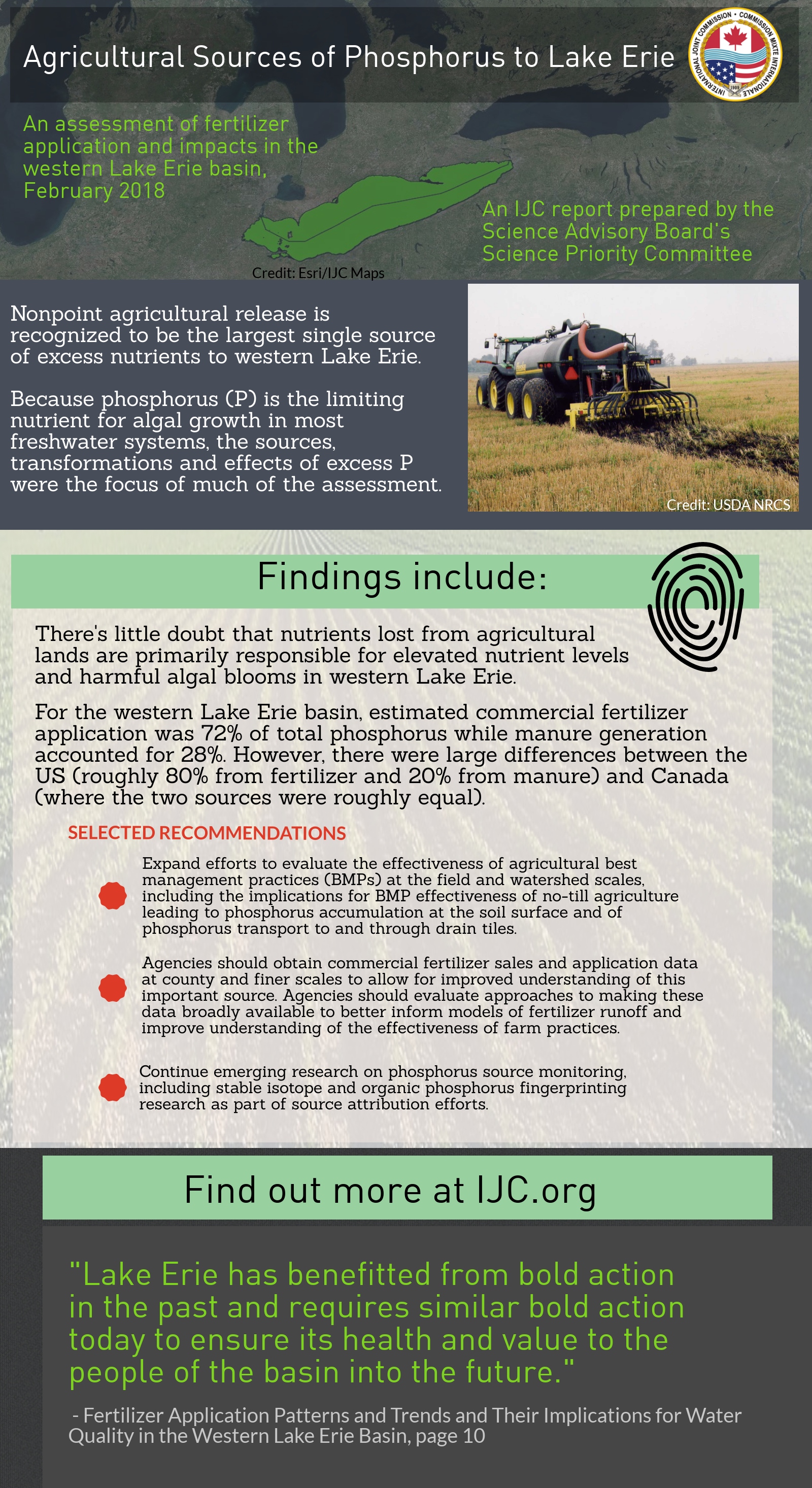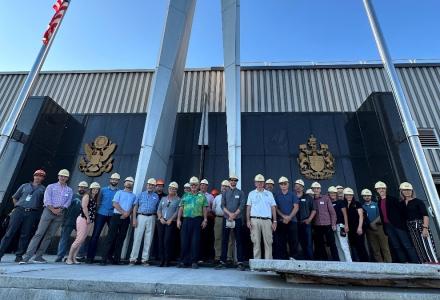
An assessment of fertilizer applications and impacts in the western Lake Erie basin has led to some discoveries. What it didn’t discover is perhaps just as important.
The IJC report was generated by the Great Lakes Science Advisory Board’s Science Priority Committee. The primary focus was on determining the relative contributions of commercial (or synthetic) fertilizer and manure to phosphorus loading.
Phosphorus is a nutrient that aids in plant growth --- when it’s used on farmland or lawns and when it runs off into waterways. The western Lake Erie basin has seen a spike in algal growth and harmful algal blooms due to excess phosphorus inputs. The basin also receives phosphorus from wastewater and industrial discharges and urban non-point source runoff. But the greatest source, estimated at two-thirds of the total phosphorus load to the lake, is agriculture.
What’s the magnitude of this? The IJC report used commercial fertilizer sales data, reported rates of application and total manure generation based on livestock numbers within the watershed to derive estimates. Unfortunately, prevailing privacy policies limit access to farm-scale data and information, so the calculated amount is an estimate.
Among the report’s recommendations are that agencies “obtain (e.g. through surveys, available datasets and any new data as appropriate) commercial fertilizer sales and application data at both higher temporal and spatial resolution to allow for improved understanding of this important source.”

The IJC has previously recommended mandatory standards to get harmful algal blooms under control in the western Lake Erie basin.
The IJC report estimates that more than 41,000 metric tons of phosphorus is included in manure generated and commercial fertilizer applied in the US portion of the watershed. Another 16,000-plus metric tons of phosphorus is included in manure generated and fertilizer applied in the Canadian watershed. This is based on the most recent comparable binational data from 2006-2007, as compiled and analyzed by Limnotech, a Michigan-based consulting firm that assisted the committee in preparing the report.
Most phosphorus used in agriculture comes from commercial fertilizers --- an estimated 72 percent between the two countries. On the US side, commercial fertilizer supplies the majority of nutrients at 81 percent. Ontario watersheds receive slightly more phosphorus from manure (52 percent) than commercial fertilizer (48 percent), according to the report, “Fertilizer Application Patterns and Trends and Their Implications for Water Quality in the Western Lake Erie Basin.”
In better news, the report finds that phosphorus fertilizer inputs are declining while more phosphorus is being removed when crops are harvested. However, phosphorus stored in the soil has the potential to contribute to river loads for years or decades to come. The analysis also found that the adoption of appropriate management practices – the timing, rate, location and method of commercial fertilizer and manure placement – may have a bigger influence on phosphorus export from agricultural watersheds than the type of fertilizer.
Control measures enacted in the 1970s demonstrated that Lake Erie eutrophication could be reversed by strategies focused mainly on point sources like wastewater and industrial discharges.
“The challenge this time is with agricultural nonpoint sources of nutrients, which will require a different set of responses,” the report states. “Lake Erie has benefitted from bold action in the past and requires similar bold action today to ensure its health and value to the people of the basin into the future.”


Jeff Kart is executive editor of the Shared Waters IJC newsletter and a contractor to the US Section of the International Joint Commission in Washington, D.C.




